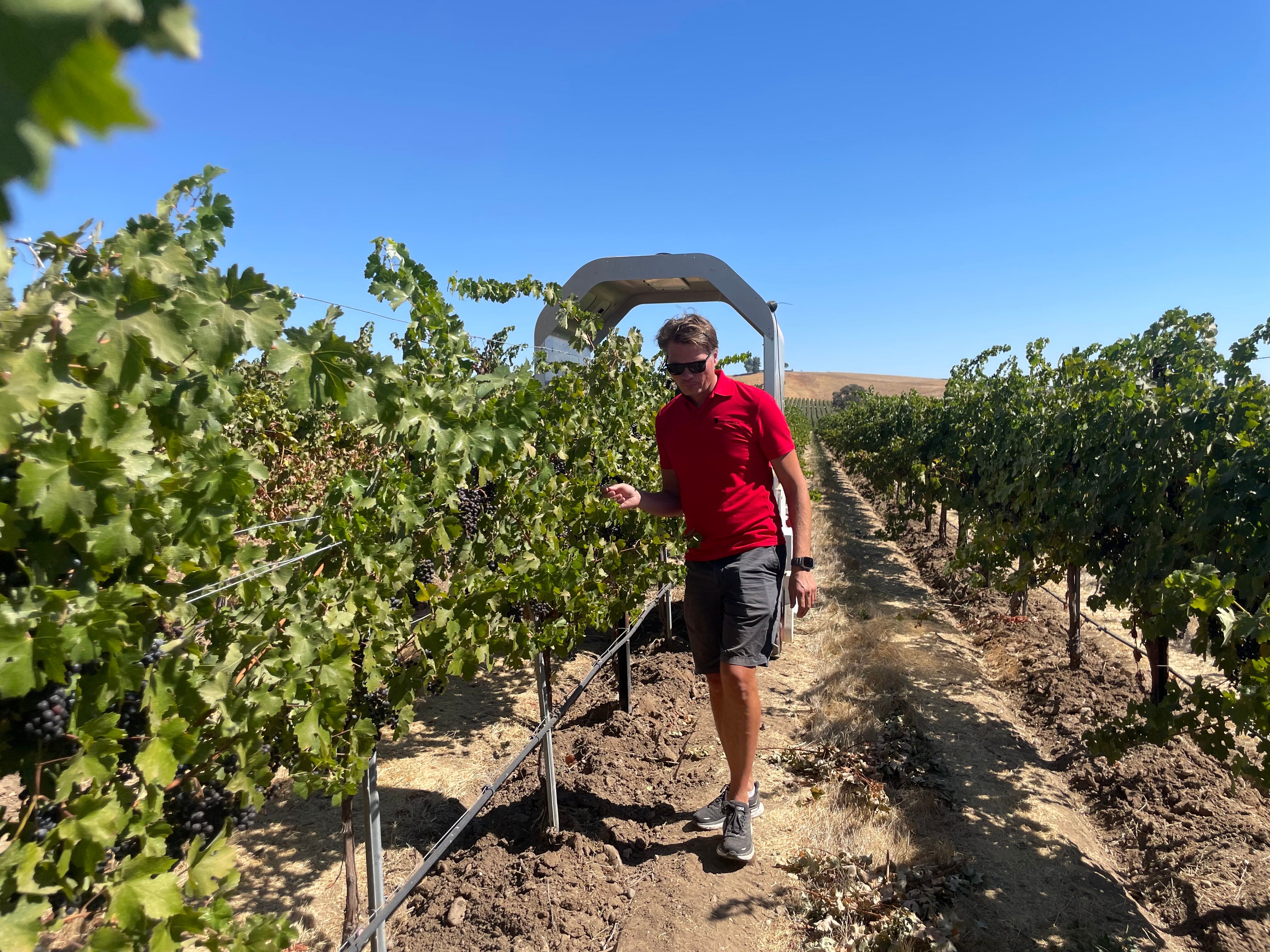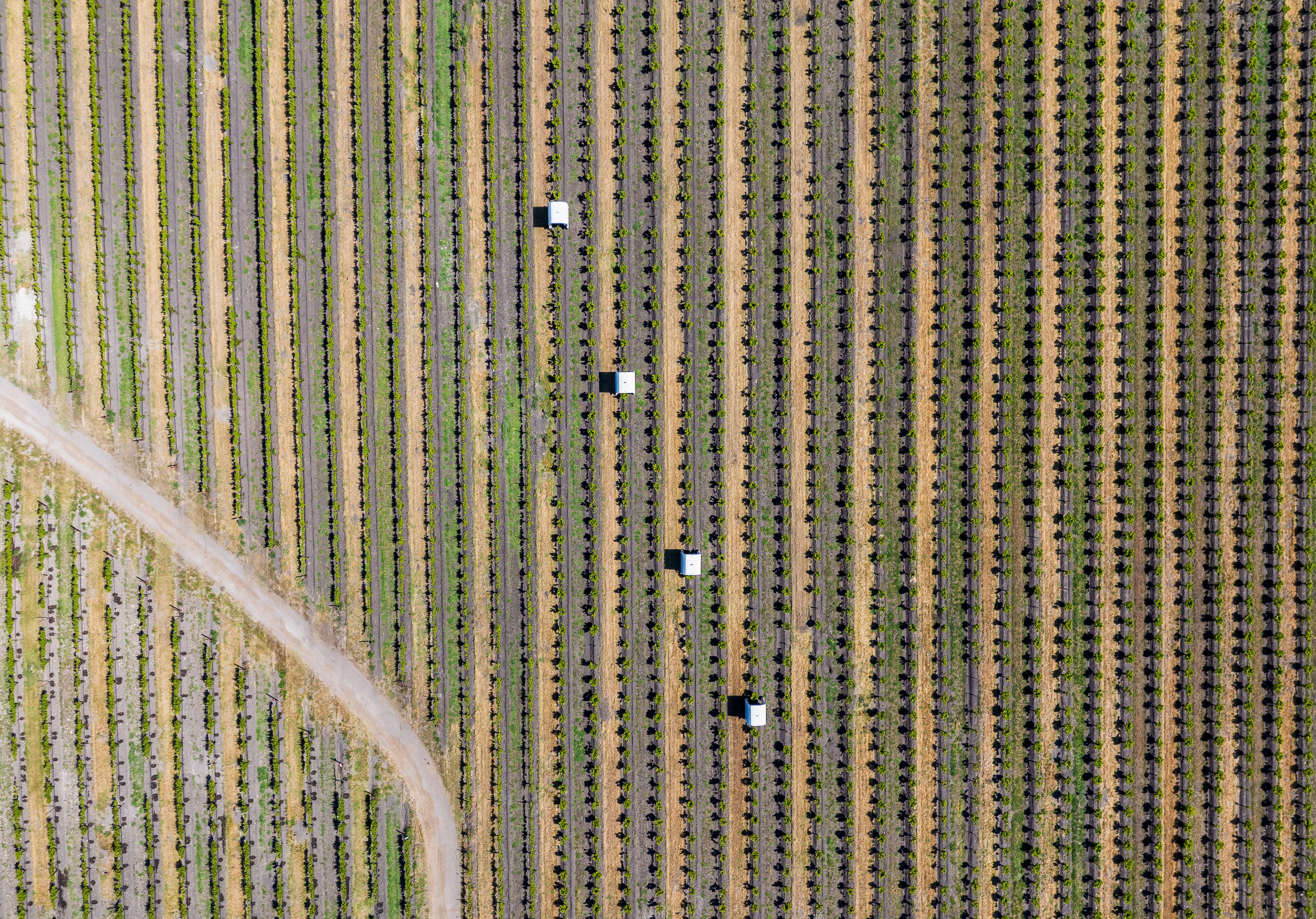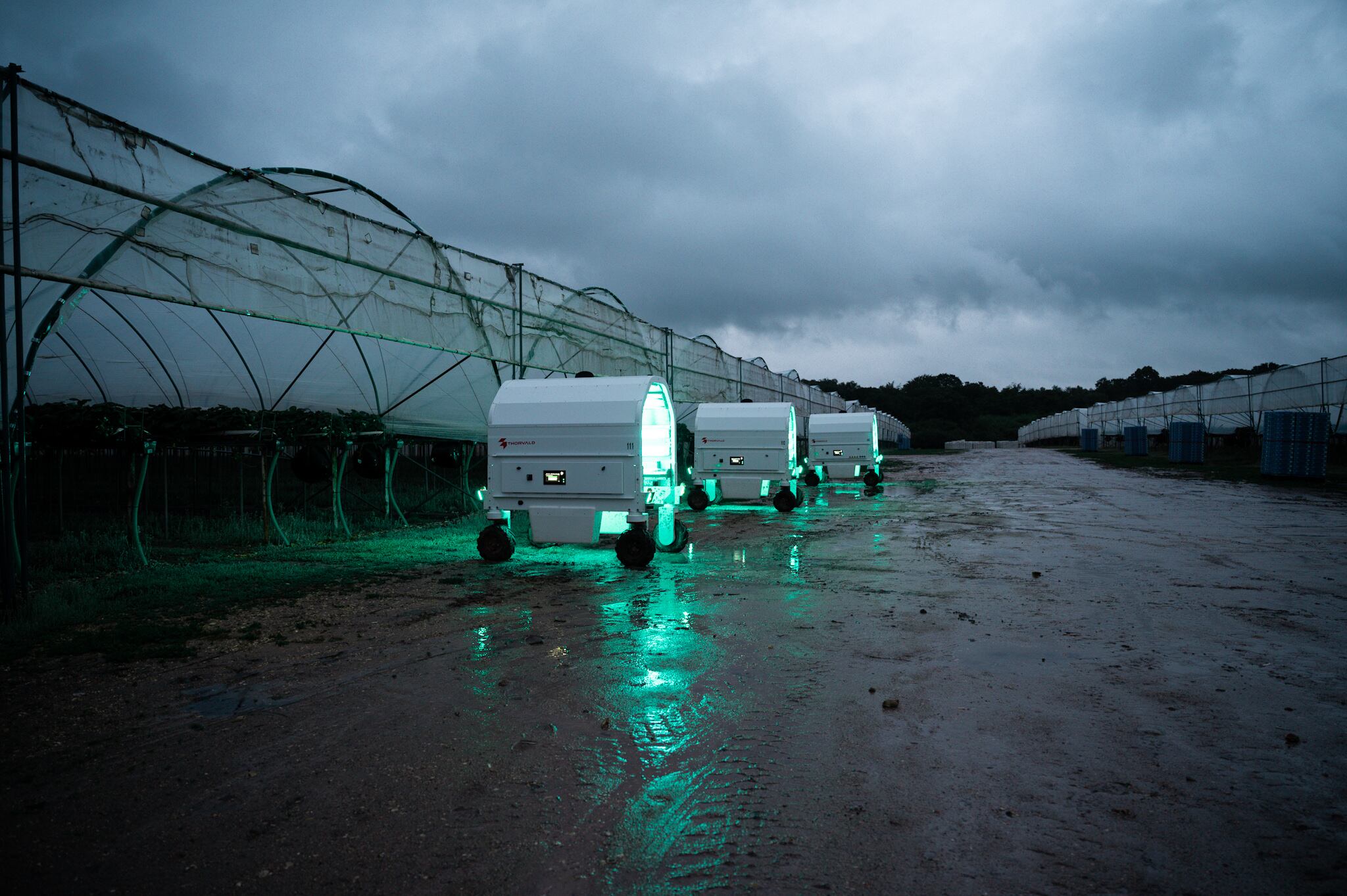The funding – led by new and existing investors including Luxembourg-based VC fund Praesidium Agri-FoodTech – will be used to accelerate the commercial rollout of Thorvald across the UK and US.
Thorvald now supports 13 leading strawberry growers in the UK and treats around 20% of the national market, with a target to exceed 30% in 2026. Saga recorded its first commercial revenue from its yield prediction data tool in the 2025 growing season and now says it has a “unique opportunity” to leverage the data collected during its treatment of thousands of acres each week.
Strong appetite for autonomy in US vineyards
In the US, Thorvald is already operating across more than 1,300 acres of vineyards, with plans to triple that footprint by 2026. The platform has been approved and included in California’s CORE incentive programme, offering substantial grants for robot sales. In total, over 150 Thorvald 3.0 units are active in the field in the 2025 growing season in the US.
“We’ve proven Thorvald works, now we’re scaling it,” said founder Pål Johan From, who recently relocated to California to lead US operations. “This raise gives us the runway to accelerate adoption, improve efficiency in agriculture, and reduce chemical use across two of the world’s most chemically dependent specialty crop markets.”
Asked why the company is focussed on expanding in US vineyards and not in its domestic European market, From told AgTechNavigator: “We decided on treating vineyards in the US as growers face particularly high levels of powdery mildew, and the existing treatment regimes are costly and often inefficient. The US wine industry has also shown a strong appetite for adopting data-driven, autonomous solutions and are among the largest markets in the world.”
‘Grapevines require a different approach’
Saga’s tech needs to be tweaked as it eyes growth in the US, From told us. “In the UK, our Thorvald robots protect around 20% of the national strawberry table-top production. In the US, our focus is on grapevines, which requires a different approach. We’ve adapted our Thorvald robots specifically for vineyards, making adjustments for variations in trellising systems, row spacing, and terrain, including slopes. Building on these learnings, we’re also preparing to launch a new, dedicated grapevine robot next season, designed from the ground up for even tougher terrains.”

The company’s Farming-as-a-Service (FaaS) model, where growers pay for disease-free acreage rather than purchasing equipment outright, is used in both UK and US markets. “It has been very well received in the US,” From said. “It lowers the barrier to entry and spreads costs over time. In addition, we are now the only robot of our kind to be approved for California’s CORE incentive program, which offers substantial grants toward eligible robot purchases. This means we will also be offering sales linked to that program alongside our FaaS offering.”
Easier navigation in open vineyard rows
He summed up the differences between the two markets. “UK strawberry production in table-top polytunnels and US vineyard operations are both highly innovative, but their environments shape how our Thorvald robots operate. In the UK, strawberry farms are typically more compact, enabling fast, targeted treatments.
“In the US, vineyards are more expansive, allowing for longer continuous runs without repositioning. One notable difference is autonomy: navigating open vineyard rows is generally easier than operating inside polytunnels, where tight spaces and support structures demand extra precision.
“In both markets, the benefits are clear – healthier crops and reduced chemical use. For strawberries, protecting high-value fruit during a short harvest window is critical; for grapes, consistent disease prevention supports quality across a longer growing cycle.”



